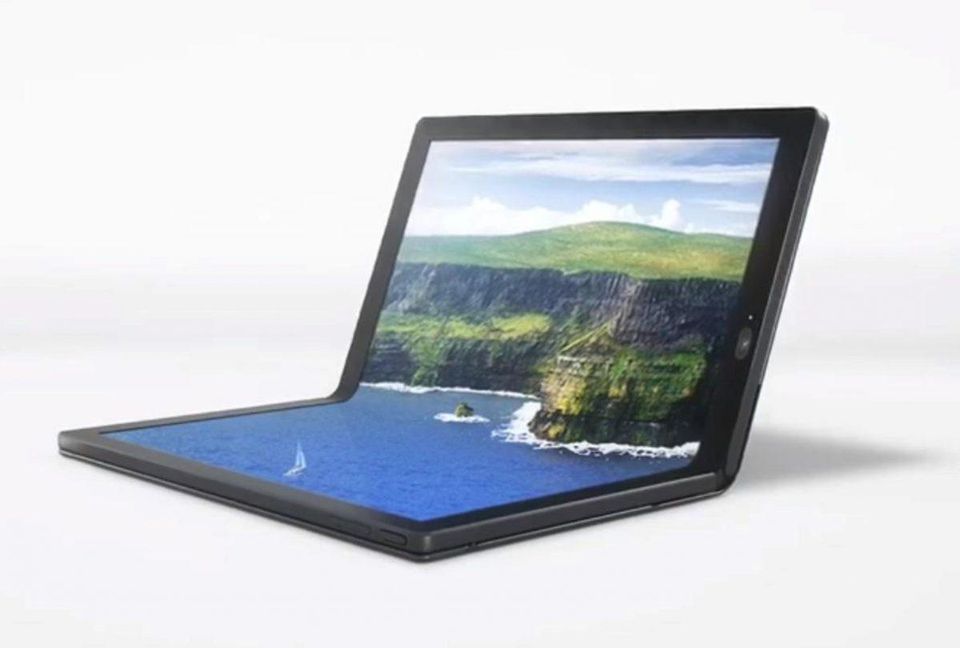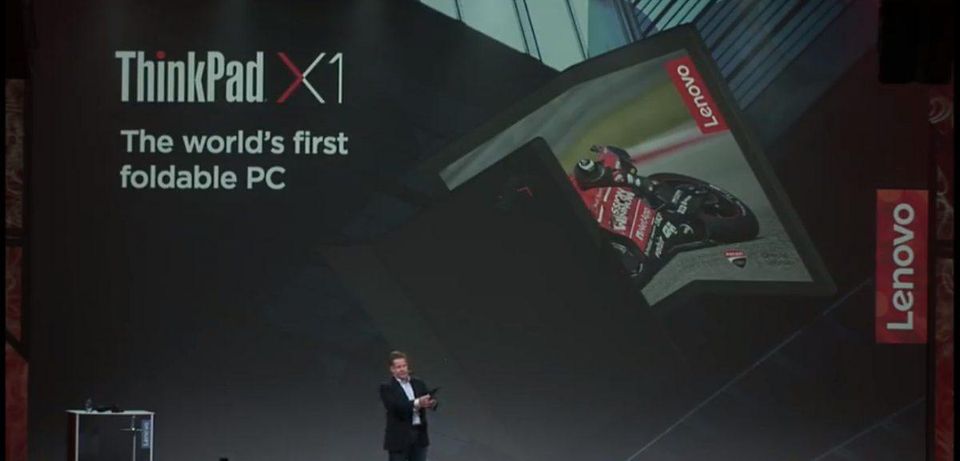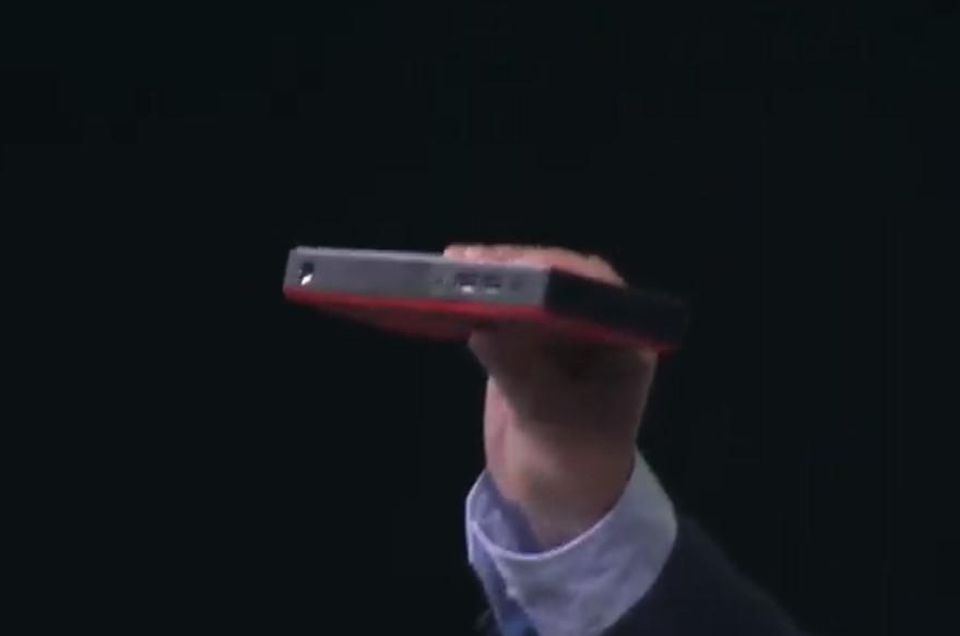
LENOVO
Last week, I attended Lenovo Accelerate 2019 in Orlando, Florida. It was an exciting event, and not because it took me 13 hours to get there from Austin, but rather, the content. This year, Lenovo combined its business partner event, Accelerate, and its premier customer event, Transform, into one big event around the theme of “intelligent transformation,” a spin on the oft-used tech industry term, “digital transformation.” You can see my Transform 2018 coverage here. There was no shortage of news to comb through, particularly on the client computing side. Let’s take a closer look at what I thought were some of the more impactful announcements from the event.
Lenovo expands offerings for IoT
Lenovo showcased a variety of its ThinkIoT offerings at the event and highlighted the moves it was making in the sector. The company showed off its warehouse automation solution, which can utilize a package’s QR code to determine within 200 milliseconds whether or not it is put on the correct pallet. Also highlighted at the event was Lenovo’s automated computer vision cashier prototype for retail, which is currently being piloted at Lenovo’s Beijing campus. Imagine being able to walk up to a self-checkout line and have all items scanned automatically. No longer would you have to scan every single item’s individual barcode. This is huge, in my opinion, and has the potential to totally revolutionize retail.
The big ThinkIoT announcement from the event is that for customers that deploy Azure for IoT, AI, and data management can now utilize the full range of Lenovo’s IoT portfolio, such as the previously mentioned ThinkCentre Nano IoT, the ECP300 edge gateway, the ThinkSystem SE350 edge server, and the IOT510C smart camera. All in all, it seems like a smart collaboration that will boost both the company’s IoT efforts. Enterprise customers are looking for IoT solutions, not a bag of parts with an instruction manual.
Strategically of note is that while Lenovo pledged “channel first,” Lenovo, in special circumstances where channel partners don’t exist, it will serve as an integrator. I expect this to happen mostly in China. I see this as a good move for Lenovo in that as more value is added, the higher the margins.
Keep your eye on what Lenovo is doing in IoT as I believe the company will be doing some big things here.
Lenovo Intelligent Insights with SAP Data Hub
Of note, I also wanted to hit on is Lenovo’s new Intelligent Insights with SAP Data Hub offering. While officially announced at Sapphire, Data Hub should allow businesses to orchestrate and view their data across cloud, on-prem, or hybrid infrastructure, on both SAP and non-SAP systems. SAP’s Data Hub orchestration platform essentially allows the solution to sort and distribute data from various disparate sources, which should enable faster, smarter decision making for businesses. Lenovo cited the example of airports, and the immense amount of data generated within—data, weather, maintenance, flight info, etc. Lenovo Intelligent Insights with SAP Data Hub, in theory, can synthesize all this different data together to make better decisions.
As part of an IoT Smart Warehouse demonstration, Lenovo showed an SAP Data Hub dashboard with the integration of the forklift and pallet tracking information. Lenovo sees IOT data streams as a key source of new data that gets ingested by Data Hub to enable new analytics and decision making. I think that makes a lot of sense.

PATRICK MOORHEAD
The SAP-Lenovo relationship is an interesting one and goes back to the IBM X86 infrastructure days and was extended in the early Lenovo-IBM transition days. Check what I wrote about the relationship here three years ago and you will see the two companies are executing to what they promised. After talking to Lenovo DCG’s new COO Doug Fisher at the event, I am keeping my eye on this relationship more closely than before.
ThinkPad X1 foldable
The flashiest new product of the show was the new foldable ThinkPad X1. Lenovo took great pains to insist this new device is a “full-fledged laptop”—not a tablet, phone, or hybrid. The device comes with a 13-inch OLED 2K display, a joint effort with LG, that Lenovo says can fold in half to cut its width in half. It can be folded into a book, folded out flat, folded into a clamshell (à la a traditional notebook), docked into a multi-monitor setup, used as a full-screen tablet to take notes on, and so on. Multi-functionality to the max.

PATRICK MOORHEAD
I got a few minutes to play with the prototype ThinkPad X1 at the event. It was definitely a prototype, with all the things that come along with that. Still, it felt more durable than I’d expected, in typical ThinkPad fashion, and it felt like I was carrying a book when it was closed. It felt comfortable in hand and extremely portable.
I look forward to spending more time with this device once it hits the markets in 2020.
I believe the determinants of the platform’s success will be special gestures that get the device to do what it needs to do quickly, application software that uses those gestures, and of course, durability. A foldable phone value proposition is clearer to me than a foldable tablet, but I see category value in few main areas:
- A better tablet that can do more things, more naturally. Imagine if you could fold your 13” iPad Pro and use one half as a keyboard when you needed it at the right keyboard incline.
- A new category device that can more naturally fit into spaces like a purse. Pop it out and work when you need it, when you’re done, throw it into your purse.
- A new category device where a multi-modal finger input adds value. Think games, music mixing, engineering, etc.
- A new kind of modular computing solution where the user carries the foldable pops it in a stand and uses a portable or even built-in laser keyboard. I bought ten external keyboards, including the laser keyboard when using the Samsung Galaxy Fold and learned some valuable lessons.
New Windows 10 devices
The event also showcased the new ThinkPad X1 Extreme Gen 2 15”-inch notebook, targeted at advanced enterprise users. While perhaps not quite as head-turning as the foldable X1, this notebook looks fairly impressive. It features up to 9th Gen Intel Core i9 processors and an NVIDIA GeForce GTX 1650 GPU with Max Q design. It comes with the option of a 4K OLED touch display, and up to double the amount of storage as its predecessor. I will, of course, have to spend some time with the device to offer an endorsement, but on paper, it looks like quite the powerhouse.
Lenovo also announced ThinkBook at the event, a new sub-brand of notebooks targeted towards SMBs (small to medium-sized businesses). The niche Lenovo says it's looking to provide for are businesses who are drawn to consumer laptops, for their design and price advantages, but who need the extended services and warranties of enterprise devices. The ThinkBook sub-brand includes the new ultra-slim ThinkBook S Series, which comes in 13 and 14-inch models, with business-grade, built-in security features, support services and feature modern looking design elements, such as an aluminum finish, typically found in consumer devices.
The new ThinkBooks are super light—the 14s weighs only 3.3 lbs., while the 13s comes in 2.95 lbs. They can be folded flat, and their premium FHD displays feature super-thin bezels. Security features include a fingerprint reader power button for single-step authentication, a physical ThinkShutter camera cover, and Discrete TPM 2.0, which Lenovo says will enable Windows 10 security features and data encryption. The ThinkBooks all include 8th Generation Intel Core processors, Integrated Intel UHD 620 or discrete AMD Radeon 540X graphics, and standard SSD.
In the nearly 30 years I have watched many manufacturers do special SMB lines which were quickly discontinued in the same of operational efficiency. I need to drill into many of the specifics, but I do like that the line isn’t 100% reinvented as it borrows capabilities from both Lenovo consumer and commercial lines. I believe ThinkBooks were designed to meet the needs of channel partners versus, let’s say, the differing needs of SMBs.
A side note on security I wanted to share- All of the top 3 PC makers, including Lenovo, now say that they deliver the most secure PC. I find this security arms race ultimately good for the enterprise, albeit confusing at times. The more secure, the better.
New ThinkCentre Desktop PCs
In addition to the new notebook offerings, Lenovo also announced several new desktop PCs to its ThinkCentre portfolio. These include the ThinkCentre M90n-1 Nano, which Lenovo calls the most compact commercial desktop series in the world, and the M90n-1 Nano IoT, which features a more rugged design geared towards IoT environments like manufacturing, with higher tolerance of heat and vibration.

PATRICK MOORHEAD
Introducing ThinkReality
Lenovo also announced at the event a new sub-brand it calls ThinkReality, that seeks to give the business a solutions-based approach to AR/VR, including both software and hardware. The platform is device and cloud agnostic, which Lenovo says will allow businesses to adopt and manage AR/VR applications across devices, cloud services, and operating systems. Ultimately, Lenovo wants to enable businesses to utilize AR for collaboration, training, repairs, remote assistance, and more.
ThinkReality is a big bite for Lenovo to chew, but it makes sense as we are many years into the AR and VR lifecycle. Successful and unsuccessful AR and VR ecosystems are becoming evident, and the timing is right for the company. All we need now are more apps, which as we have seen, is tough. Colleague Anshel Sag will be drilling more deeply to provide more detailed analysis.
On that note, Lenovo also announced the first ThinkReality device at Accelerate, a hands-free mobile headset it calls the ThinkReality A6. The A6 is powered by the Qualcomm Snapdragon 845 Mobile XR Platform, and sports waveguide optics from Lumus housed within an Intel Movidius Vision Processing Unit. It is lightweight (at .83 lbs.), and features a 1080p resolution in each eye, with 40-degree diagonal FOV. Lenovo says these specs enable the device to handle both simple and complex AR business solutions. The experience just keeps getting better.
Datacenter group update
While the Lenovo datacenter group (DCG) didn’t announce any new products publicly at Accelerate, it’s important to say that most of its new products this year were announced at Mobile World Congress here and includes the ThinkSystem SE350 edge server as well as info on the Multi-Access Edge Computing (MEC) platform and 5G virtualized O-RAN solution demoed at the event. Lenovo announced new servers coincident with Intel’s Cascade Lake launch. I did want to say a few things as the group is on an absolute roll. I spent a day with DCG’s executives about what their plans are for the future but can only talk about it after the new capabilities are announced publicly.
Over the past year, Lenovo has:
- outperformed the market in HCI, storage, all-flash arrays, and outperformed the hyperscale server market by 7X
- become the #1 share in supercomputers and are in 140 of the systems on the Top500 List, moving from a 182 place deficit to 56 place advantage in four years
- according to ITIC, is #1 in x86 server reliability, six years running
- according to TBR, is #1 in server customer satisfaction
- generated 74% of its revenue outside China
In 2019, I expect to see aggressive moves in solution stacks, storage penetration with NetApp, and even more gains in hyperscale. I have to leave it at that.
Wrapping up
All in all, it was a good showing for Lenovo with its commercial and datacenter aspirations to its channels and enterprises. Both businesses, devices and the datacenter, are doing well, growing and I expect more growth in the future. While I would have loved to have seen some DCG announcements, the company had a flurry of them at MWC and coincident with Cascade Lake.
Note: Moor Insights & Strategy writers and editors may have contributed to this article.
Patrick founded the firm based on his real-world world technology experiences with the understanding of what he wasn’t getting from analysts and consultants. Ten years later, Patrick is ranked #1 among technology industry analysts in terms of “power” (ARInsights) in “press citations” (Apollo Research). Moorhead is a contributor at Forbes and frequently appears on CNBC. He is a broad-based analyst covering a wide variety of topics including the cloud, enterprise SaaS, collaboration, client computing, and semiconductors. He has 30 years of experience including 15 years of executive experience at high tech companies (NCR, AT&T, Compaq, now HP, and AMD) leading strategy, product management, product marketing, and corporate marketing, including three industry board appointments.
- Patrick Moorheadhttps://moorinsightsstrategy.com/author/phfmphfmgmail-com/
- Patrick Moorheadhttps://moorinsightsstrategy.com/author/phfmphfmgmail-com/
- Patrick Moorheadhttps://moorinsightsstrategy.com/author/phfmphfmgmail-com/
- Patrick Moorheadhttps://moorinsightsstrategy.com/author/phfmphfmgmail-com/






















































































